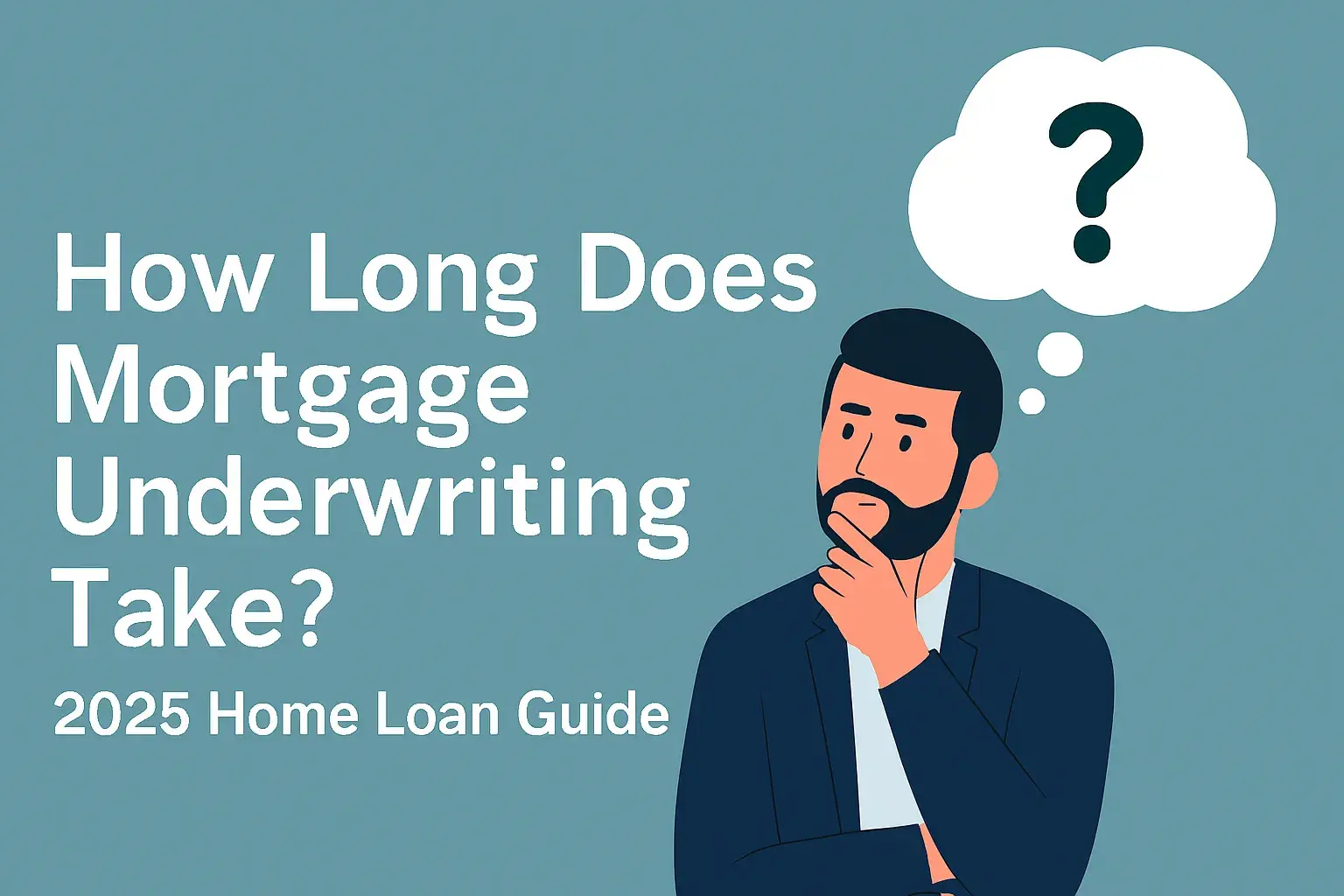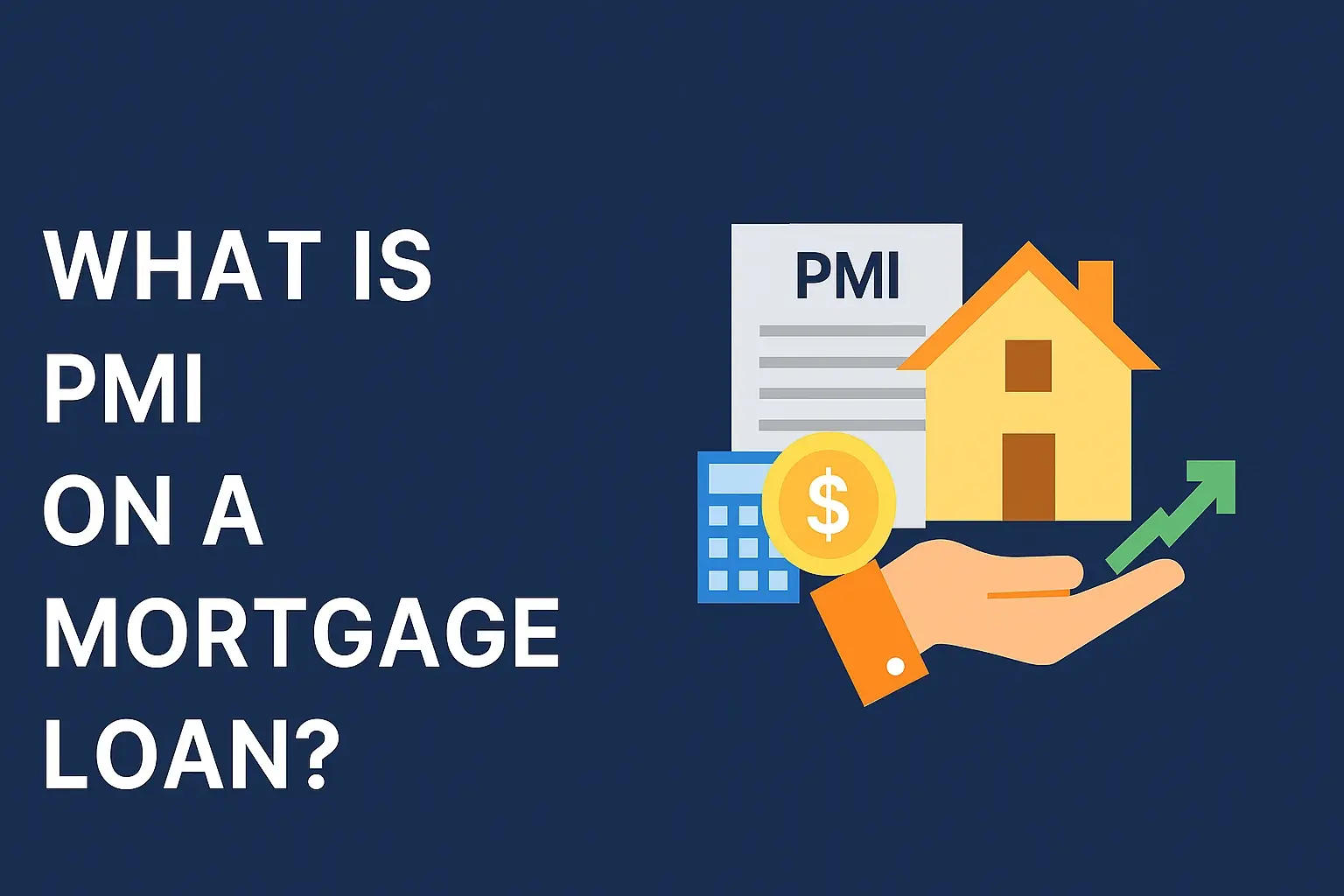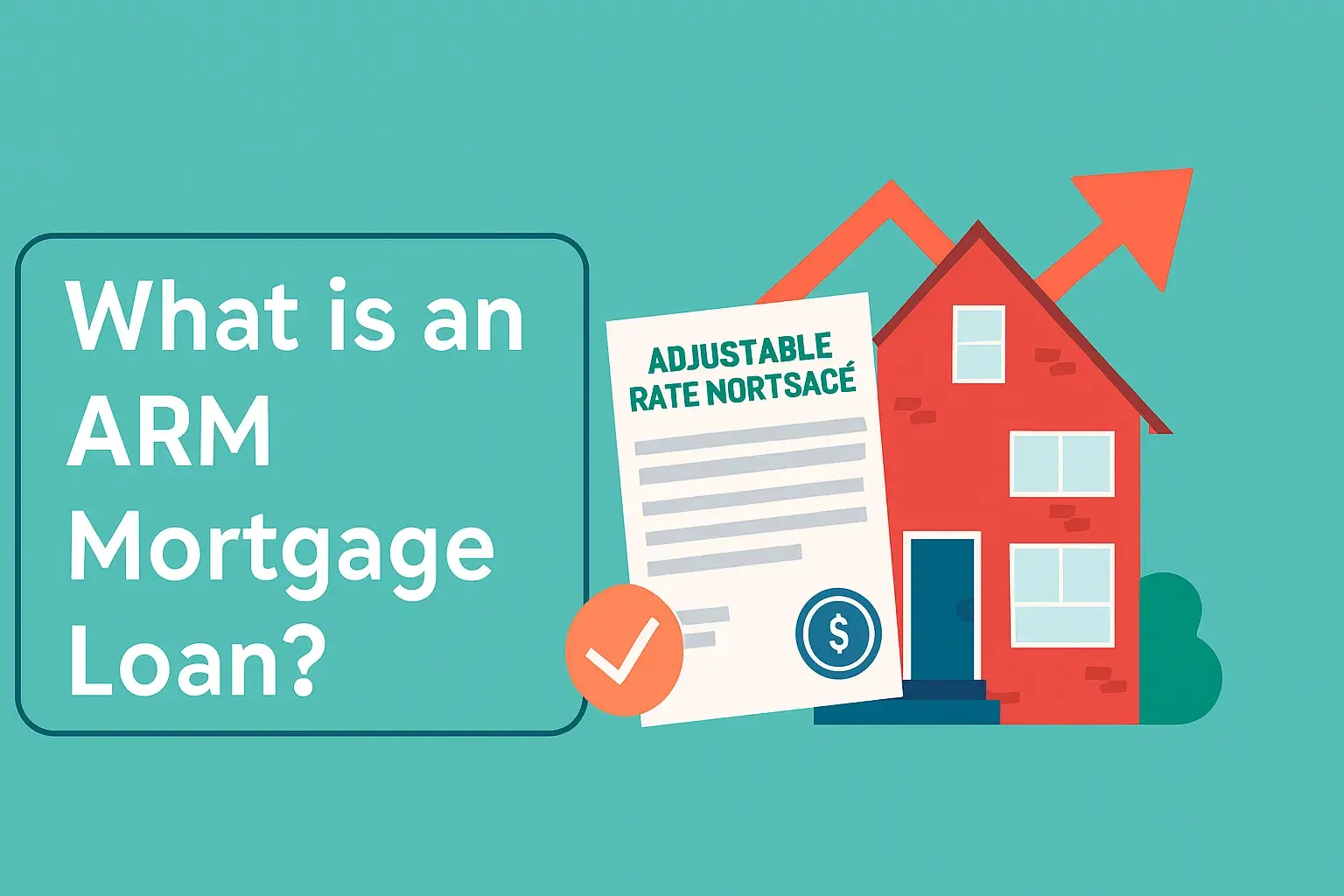-
Posted on: 25 Apr 2025

-
Discover the definitive guide to understanding a charge-off on your credit report. This article demystifies what a charge-off signifies, its profound impact, and actionable strategies for resolution and credit repair in 2025.
What is a Charge-Off on Your Credit Report?
A charge-off is a serious negative mark that appears on your credit report when a lender or creditor determines that a debt is unlikely to be collected. This typically happens after a period of delinquency, usually 120 to 180 days past due, depending on the type of credit. When a debt is charged off, the creditor essentially writes it off as a loss for tax purposes. However, this does not mean the debt is forgiven. The original creditor may still attempt to collect the debt, or they might sell it to a third-party debt collection agency. A charge-off significantly damages your credit score, making it harder to obtain new credit, secure loans, rent an apartment, or even get certain jobs.
The Process Leading to a Charge-Off
Understanding the sequence of events that leads to a charge-off is crucial for prevention and resolution. It’s a gradual process, not an overnight occurrence. Lenders have internal policies and timelines before they declare a debt uncollectible.
Initial Delinquency and Late Fees
The journey to a charge-off begins the moment you miss a payment. Your lender will typically send a reminder and may assess late fees. For instance, if your credit card payment is due on the 15th and you don't pay by then, you're considered delinquent. Most credit card companies offer a grace period, but if payment isn't received within that window (often 15-30 days), late fees are applied, and the delinquency is reported to credit bureaus.
Consecutive Missed Payments
Missing one payment is bad, but consecutive missed payments escalate the situation. After 30 days past due, the delinquency is reported. At 60 days past due, the lender will likely increase its collection efforts, possibly by calling you more frequently or sending more urgent notices. By 90 days past due, the debt is considered seriously delinquent, and the lender is actively considering its next steps, which might include preparing for a charge-off.
The Charge-Off Decision
Typically, after 120 to 180 days of non-payment, the lender will officially charge off the debt. This means they've decided the probability of collecting the full amount is very low. They will then report this status to the credit bureaus. For example, a credit card company might charge off a debt after 150 days of being past due. A mortgage lender might have a longer timeline, potentially closer to 180 days or more, due to the secured nature of the loan.
Why Lenders Charge Off Debt
From a business perspective, charging off a debt is a strategic decision. It allows the company to remove the non-performing asset from its books, which has tax implications. By writing off the debt, they can claim it as a loss, reducing their taxable income. This doesn't mean they give up on trying to recover the money. Many lenders will then sell the debt to a debt buyer for pennies on the dollar, or assign it to a collection agency. These entities are specialists in debt recovery and will pursue the debt aggressively.
What Happens After a Charge-Off?
Once a debt is charged off, it remains on your credit report for a significant period. It severely impacts your credit score, often by 100 points or more. This makes it difficult to qualify for new credit, such as loans or credit cards. It can also affect your ability to rent an apartment, get a mortgage, or even secure certain types of employment. The debt can also be sold to a collection agency, which will then pursue you for payment. In some cases, the original creditor might pursue legal action, such as wage garnishment, if the debt is not resolved.
The Devastating Impact of a Charge-Off
A charge-off is one of the most damaging items that can appear on your credit report. Its negative consequences ripple through various aspects of your financial life, making it a critical issue to address promptly. The impact is not just immediate but can be long-lasting, affecting your ability to achieve financial goals for years to come.
Credit Score Reduction
The most immediate and significant impact of a charge-off is the drastic drop in your credit score. Credit scoring models, like FICO and VantageScore, heavily penalize such severe delinquencies. A charge-off can reduce your credit score by 100 points or more, depending on your score before the incident. For someone with a good credit score (e.g., 750), a charge-off could drop it into the fair or poor range (e.g., below 650). This makes it challenging to qualify for new credit with favorable terms.
Difficulty Obtaining New Credit
Lenders use credit reports to assess risk. A charge-off signals to potential lenders that you have a history of not repaying debts. This makes them hesitant to extend new credit. You may be denied applications for credit cards, personal loans, auto loans, and mortgages. If you are approved, you'll likely face much higher interest rates and stricter terms, such as requiring a larger down payment or a co-signer.
Impact on Renting and Housing
Landlords often check credit reports as part of their tenant screening process. A charge-off can be a red flag, indicating potential financial instability. Many landlords have minimum credit score requirements, and a charge-off can easily push you below that threshold, leading to rejection of your rental application. This can limit your housing options and make it harder to find a place to live.
Employment Considerations
In certain industries, particularly those involving financial responsibility or access to sensitive information, employers may review credit reports. A charge-off can be seen as a sign of poor judgment or irresponsibility, potentially impacting your job prospects. While not all employers conduct credit checks, those that do may disqualify candidates with significant negative marks like charge-offs.
Higher Insurance Premiums
In many states, insurance companies use credit-based insurance scores to help determine premiums for auto and homeowners insurance. A poor credit history, including charge-offs, can lead to higher insurance rates. Insurers argue that credit history is a predictor of risk, and individuals with lower credit scores are statistically more likely to file claims.
Potential for Legal Action
Even after a charge-off, the debt is still legally owed. The original creditor or a debt collector can pursue legal action to recover the money. This could involve filing a lawsuit, which, if successful, could lead to wage garnishment, bank account levies, or property liens. The statute of limitations for debt collection varies by state, but a charged-off debt can remain collectible for many years.
Example: Sarah had a credit card with a balance of $5,000. Due to unexpected medical bills, she missed several payments. Her card was eventually charged off. Her credit score dropped from 720 to 605. When she tried to rent a new apartment, her application was denied because of the charge-off. She also faced significantly higher interest rates when she applied for a car loan.
How Long Does a Charge-Off Stay on Your Credit Report?
The duration a charge-off remains on your credit report is governed by the Fair Credit Reporting Act (FCRA). This federal law dictates how long negative information can be reported by credit bureaus. Understanding this timeline is crucial for long-term credit management and planning.
The Seven-Year Rule
Under the FCRA, most negative information, including charge-offs, can remain on your credit report for seven years from the date of the original delinquency that led to the charge-off. For example, if you stopped paying a credit card on January 15, 2024, and it was charged off on May 15, 2024, the charge-off will typically fall off your credit report around January 15, 2031. The seven-year clock usually starts from the date the account first became seriously delinquent (e.g., 30 days past due).
Exceptions for Bankruptcy
Bankruptcies are a significant exception to the seven-year rule. Chapter 7 bankruptcies can remain on your credit report for up to 10 years from the filing date. If your charged-off debt was included in a bankruptcy, its reporting period will align with the bankruptcy's duration.
What Happens After Seven Years?
Once a charge-off reaches the seven-year mark (or 10 years for bankruptcy), it must be removed from your credit report by the credit bureaus (Equifax, Experian, and TransUnion). This is often referred to as "falling off" your credit report. While it no longer directly impacts your credit score calculation, its existence on the report can still be problematic for certain checks, though this is rare and usually limited to specific investigative purposes.
The Impact on Credit Score Diminishes Over Time
It's important to note that while a charge-off remains on your report for seven years, its negative impact on your credit score tends to diminish over time. The most significant damage occurs in the first few years after the charge-off. As you demonstrate responsible credit behavior (making on-time payments, managing credit utilization), your score can begin to recover, even with the charge-off still present.
2025 Statistics: According to recent analyses, consumers with a charge-off on their credit report typically see their credit scores drop by an average of 100-150 points. The presence of a charge-off can reduce the likelihood of loan approval by up to 70% for prime borrowers.
Charge-Off vs. Collection Account: Key Differences
The terms "charge-off" and "collection account" are often used interchangeably, but they represent distinct stages in the debt recovery process and have different implications for your credit report. Understanding these differences is vital for navigating debt resolution strategies.
Charge-Off: The Creditor's Internal Decision
A charge-off is an accounting term used by the original creditor. It signifies that the creditor has deemed the debt uncollectible and has written it off as a loss on their financial statements. At this stage, the debt is still technically owed by the consumer, and the original creditor may continue collection efforts or sell the debt.
- Who reports it: The original creditor.
- Timing: Occurs after a prolonged period of delinquency (typically 120-180 days).
- Impact: Significant negative impact on credit score.
- Debt status: Still legally owed; creditor may attempt to collect or sell.
Collection Account: A New Entity Takes Over
A collection account is created when the original creditor sells the charged-off debt to a third-party debt collection agency. The debt collector then owns the debt and is responsible for collecting it. Alternatively, the original creditor might assign the debt to a collection agency to collect on their behalf, without selling it outright. In either case, a new account appears on your credit report representing the collection agency's efforts.
- Who reports it: A debt collection agency or debt buyer.
- Timing: Appears on your credit report *after* the debt has been charged off and sold or assigned to a collector.
- Impact: Also a significant negative impact, often compounding the damage of the charge-off.
- Debt status: Still legally owed; collector will pursue payment.
Key Distinctions and Their Significance
The primary distinction lies in who is attempting to collect the debt and how it's reported. A charge-off is the original creditor's internal action, while a collection account signifies a change in who is actively pursuing payment.
- Reporting: A charge-off is usually reported by the original creditor. A collection account is reported by the collection agency. You might see both on your report, or just one depending on the creditor's process.
- Statute of Limitations: The statute of limitations for suing on a debt is based on the original delinquency date, not when it was charged off or sent to collections. However, a new collection account might restart the clock for reporting purposes on your credit report (though not for the statute of limitations on suing).
- Negotiation: You might be able to negotiate a settlement with either the original creditor (if they still hold the debt) or the collection agency. Collection agencies often buy debt for a fraction of its value, making them more open to settlement.
Feature Charge-Off Collection Account Reporting Entity Original Creditor Debt Collector / Agency Stage of Debt Process Creditor declares debt uncollectible Debt sold or assigned to a third party Credit Report Entry Marked as "charged off" New account entry from collector Primary Goal Internal accounting/tax purposes Active debt recovery Example: John's credit card was charged off by Chase. A few months later, a collection agency named "ABC Collections" contacted him. His credit report now shows the original Chase card as charged off, and a new entry from ABC Collections indicating the debt is in collections.
How to Fix a Charge-Off on Your Credit Report
Addressing a charge-off is a critical step toward repairing your credit. While you cannot simply "remove" a legitimate charge-off from your report before its seven-year reporting period expires, you can take steps to mitigate its impact, settle the debt, and work towards rebuilding your creditworthiness. The goal is to resolve the outstanding debt and demonstrate responsible financial behavior moving forward.
Step 1: Assess the Situation and Gather Information
Before taking any action, understand the specifics of the charged-off debt. This involves checking your credit reports from all three major bureaus (Equifax, Experian, and TransUnion) to see how the charge-off is reported. Note the original creditor, the amount of the debt, the date of the charge-off, and whether it has been sold to a collection agency.
- Obtain your credit reports: Visit AnnualCreditReport.com for free reports.
- Identify the charge-off: Look for accounts marked as "charged off" or "profit and loss written off."
- Note key details: Record the creditor name, account number, original balance, current balance (if any), date of delinquency, and date of charge-off.
- Check for collection accounts: See if a debt collector has purchased or is attempting to collect the debt.
Step 2: Determine Your Strategy: Settle or Pay in Full?
Once you have a clear picture, you need to decide how to address the debt. The two primary options are settling for less than the full amount or paying the entire balance. Your choice will depend on your financial situation and the negotiation power you have with the creditor or collector.
Option A: Negotiating a Settlement
If you don't have the funds to pay the full amount, negotiating a settlement is often the most viable option. Debt collectors typically purchase charged-off debts for a fraction of their original value, giving them an incentive to accept a lower payment.
- Contact the debt holder: Reach out to the original creditor or the collection agency.
- Be prepared to negotiate: Start with a lower offer (e.g., 30-50% of the balance).
- Get the agreement in writing: Crucially, before paying anything, get a written agreement stating that the payment will settle the debt in full and that the creditor/collector will no longer pursue you for the remaining balance. Ensure the agreement specifies how the account will be reported to the credit bureaus (ideally as "settled" or "paid settled for less than full balance").
- Make the payment: Once you have the written agreement, make the payment as agreed.
- Verify reporting: After payment, check your credit report to ensure the account is updated to reflect the settlement.
Important Note: Settling for less than the full amount may still be reported as a negative mark (e.g., "settled for less than full balance"), but it's generally better than an outstanding charged-off debt. It stops further collection efforts and legal action.
Option B: Paying the Debt in Full
If you have the financial means, paying the entire charged-off balance is the cleanest way to resolve the debt. This demonstrates your commitment to fulfilling your obligations.
- Contact the debt holder: Arrange to pay the full amount.
- Request a "pay for delete" (optional but ideal): While not guaranteed, you can try to negotiate a "pay for delete" agreement, where the creditor agrees to remove the charge-off from your credit report entirely in exchange for full payment. This is rare but highly beneficial if achievable.
- Get a receipt: Obtain proof of payment in full.
- Verify reporting: Ensure the credit report is updated to show the debt as "paid in full."
Note: Even paying in full will not remove the charge-off from your report for seven years. However, it will be updated to "paid in full," which is viewed more favorably by lenders than an unpaid charged-off debt.
Step 3: Dispute Incorrect Information
If the charge-off is not legitimate or contains errors, you have the right to dispute it with the credit bureaus.
- Grounds for dispute: The debt isn't yours, the amount is incorrect, the charge-off date is wrong, or the account was already paid.
- File a dispute: Submit a written dispute to each credit bureau (Equifax, Experian, TransUnion) along with any supporting documentation.
- Creditor investigation: The credit bureau will investigate by contacting the creditor. The creditor must provide verification of the debt.
- Removal if unverified: If the creditor cannot verify the debt, the bureaus must remove it from your report.
You can find dispute forms on the websites of Equifax, Experian, and TransUnion.
Step 4: Rebuild Your Credit
Resolving the charge-off is only part of the solution. The long-term goal is to rebuild your credit score. This involves establishing a positive credit history after the negative mark.
- Secured credit cards: These require a cash deposit and are easier to get approved for.
- Credit-builder loans: Small loans designed to help you build credit history.
- Authorized user: Ask a trusted friend or family member with good credit to add you as an authorized user on their account.
- Monitor your credit: Regularly check your credit reports and scores to track progress.
Negotiating a Settlement for a Charged-Off Debt
Negotiating a settlement is a common and often effective strategy for dealing with charged-off debts, especially when you cannot afford to pay the full balance. This process requires patience, preparation, and a clear understanding of your rights and the collector's motivations.
Understanding the Collector's Position
When a debt is charged off, the original creditor sells it to a debt collector for pennies on the dollar (often 5-30% of the original debt). This means the collector has a significant profit margin even if they accept a settlement for less than the full amount. Their goal is to recover as much as possible, but they also want to avoid the time and expense of legal action if a reasonable settlement can be reached.
Preparation is Key
Before you contact the debt collector, gather all relevant information:
- Your credit reports: Understand how the debt is reported and the exact amount.
- Your financial situation: Determine how much you can realistically afford to pay, either as a lump sum or in installments.
- Statute of Limitations: Research the statute of limitations for debt collection in your state. If the statute has expired, the collector cannot sue you, which significantly weakens their negotiating position. However, they can still attempt to collect voluntarily.
The Negotiation Process
1. Contact the Collector: You can initiate contact or wait for them to contact you. If they contact you, be polite but firm. Do not admit fault or make promises you can't keep.
2. Make an Initial Offer: Start with a low offer, typically 30-50% of the outstanding balance. For example, if the debt is $5,000, you might offer $1,500-$2,500.
3. Justify Your Offer (Optional but helpful): You can briefly explain your financial hardship without oversharing. For instance, "I am currently facing significant financial challenges and can only afford to offer X amount to resolve this debt."
4. Be Prepared for Counteroffers: The collector will likely reject your initial offer and counter with a higher amount. Continue negotiating, moving closer to your maximum affordable amount.
5. Aim for "Settled in Full": Your goal is to have the debt reported as "settled in full" or "paid settled for less than full balance." Avoid any agreement that implies you still owe a balance.
6. Crucial: Get It in Writing: This is the most important step. Before you pay a single cent, demand a written settlement agreement. This document should clearly state:
- The name of the debt collector and the original creditor.
- The account number and the agreed-upon settlement amount.
- That this payment will satisfy the debt in full.
- How the account will be reported to the credit bureaus.
- That the collector will cease all further collection efforts once payment is received.
7. Make the Payment: Once you have the written agreement, make the payment using a traceable method (e.g., cashier's check, money order). Avoid using a debit card if possible, as it might be harder to dispute if the agreement is not honored.
8. Verify Reporting: After the payment clears, wait 30-60 days and then check your credit report. Ensure the account is updated to reflect the settlement as agreed upon in writing.
"Pay for Delete" Negotiation
A "pay for delete" agreement is where the collector agrees to remove the charged-off account entirely from your credit report in exchange for payment. This is the ideal outcome but is difficult to achieve. Collectors are not obligated to do this, and many will refuse. If you pursue this, ensure the agreement to delete the account is in writing before you pay.
Example: Maria owes $7,000 on a charged-off credit card. A collection agency contacted her, initially demanding the full amount. Maria, having researched her options, offered $2,800 (40% of the debt). After several calls, they agreed to $3,500. Maria insisted on a written agreement stating the debt would be settled for $3,500 and reported as "settled." She paid via cashier's check and verified the update on her credit report.
Paying a Charged-Off Debt in Full
While settling for less is common, paying a charged-off debt in full is the most straightforward way to resolve the obligation. It signifies your commitment to clearing the debt and can provide peace of mind. Although it won't erase the charge-off from your credit report for seven years, it updates the account status to "paid in full," which is viewed more favorably by lenders than an unpaid debt.
Benefits of Paying in Full
- Resolves the debt completely: You no longer owe any money on this account.
- Prevents legal action: Paying in full eliminates the risk of the creditor or collector suing you for the debt.
- Improves credit report status: The account will be updated to "paid in full," which is better than "charged off" or "settled for less."
- Peace of mind: Eliminates the stress of dealing with ongoing collection efforts.
Steps to Take When Paying in Full
1. Confirm the Amount Owed: Contact the original creditor or the collection agency to get the exact payoff amount. Sometimes, interest or fees may have accrued since the charge-off, although this is less common with charged-off debts compared to active ones.
2. Negotiate "Pay for Delete" (Optional): As mentioned earlier, you can attempt to negotiate a "pay for delete" agreement. While difficult, it's worth asking, especially if you are paying the full amount. If they agree, ensure it's in writing.
3. Arrange Payment: Determine the best payment method. A cashier's check or money order is often recommended for proof of payment. If paying online, save confirmation screens and emails.
4. Get Proof of Payment: Obtain a receipt or confirmation that the debt has been paid in full. This document should clearly state the account was paid in full.
5. Verify Credit Report Update: After payment, allow 30-60 days for the update to appear on your credit report. Check with Equifax, Experian, and TransUnion to ensure the account is accurately reflected as "paid in full."
Impact on Credit Score
Paying a charged-off debt in full will not instantly boost your credit score. The charge-off itself will remain on your report for seven years. However, the update to "paid in full" is a positive signal that you have fulfilled your obligation. Over time, as you continue to manage your credit responsibly, your score will improve. Lenders may view a "paid in full" charged-off account more favorably than an unpaid one when assessing your creditworthiness.
Example: David had a charged-off medical bill for $1,200. He had the funds and decided to pay it in full to clear his conscience and avoid potential collection issues. He contacted the hospital's billing department, confirmed the amount, and paid via cashier's check. He received a letter stating the bill was paid in full and later confirmed the update on his credit report.
Disputing an Incorrect Charge-Off
If you believe a charge-off on your credit report is inaccurate, you have the right to dispute it with the credit bureaus. The Fair Credit Reporting Act (FCRA) mandates that credit bureaus investigate disputes within a reasonable timeframe (typically 30 days). A successful dispute can lead to the removal of the inaccurate information, potentially improving your credit score.
Grounds for Disputing a Charge-Off
You can dispute a charge-off if:
- The debt is not yours: You never opened the account or incurred the debt.
- The amount is incorrect: The balance reported is inaccurate.
- The charge-off date is wrong: The date of delinquency or charge-off is incorrect, potentially making the debt past the statute of limitations for reporting.
- The account was already paid or settled: The charge-off is still listed despite you having paid it.
- The account was included in bankruptcy: The debt was discharged in bankruptcy, but still appears as charged off.
- Identity theft: The account was opened and charged off as a result of identity theft.
How to Dispute a Charge-Off
1. Gather Evidence: Collect any documentation that supports your claim. This could include payment receipts, settlement agreements, bankruptcy discharge papers, police reports (for identity theft), or correspondence with the creditor.
2. Identify the Correct Credit Bureau(s): Determine which credit bureau(s) are reporting the inaccurate charge-off. You can dispute with one, two, or all three (Equifax, Experian, TransUnion).
3. Write a Dispute Letter:
- Be clear and concise: State your name, address, and the account you are disputing.
- Specify the error: Clearly explain why you believe the charge-off is inaccurate.
- Reference the FCRA: Mention that you are disputing the information under the FCRA.
- Attach supporting documents: Include copies (never originals) of your evidence.
- Request removal: Ask for the inaccurate information to be removed from your credit report.
- Send via certified mail: This provides proof of mailing and delivery. Keep a copy of the letter and the mailing receipt.
4. Submit the Dispute: You can submit disputes online, by mail, or by phone. Online submission is often the fastest. You can initiate disputes through the credit bureaus' websites or via AnnualCreditReport.com.
5. The Investigation Process:
- The credit bureau will forward your dispute to the furnisher of the information (the creditor or collector).
- The furnisher has a legal obligation to investigate the dispute and provide verification of the debt's accuracy.
- If the furnisher cannot verify the information, the credit bureau must remove the inaccurate item from your report.
6. Review the Results: After the investigation, the credit bureau will send you an updated credit report and a letter detailing the outcome. If the dispute is successful, the charge-off will be removed or corrected.
7. Follow Up: If the dispute is denied but you have strong evidence, you can resubmit the dispute with additional information or consider filing a complaint with the Consumer Financial Protection Bureau (CFPB).
Example: Sarah received a credit report showing a charged-off medical bill from a hospital she had never visited. She suspected identity theft. She wrote a dispute letter to Experian, attaching a police report she filed for identity theft and a statement explaining the situation. Experian investigated, and since the hospital could not verify the debt belonged to Sarah, the charge-off was removed from her report.
Preventing Future Charge-Offs
The best way to deal with a charge-off is to prevent it from happening in the first place. Proactive financial management and understanding your obligations are key. By implementing sound financial habits, you can avoid the severe consequences of a charge-off and maintain a healthy credit profile.
1. Budgeting and Financial Planning
A solid budget is the foundation of financial health. It helps you understand where your money is going and ensures you allocate sufficient funds for debt payments.
- Track your income and expenses: Know exactly how much money you have coming in and going out.
- Prioritize essential expenses: Housing, utilities, food, and minimum debt payments should come first.
- Allocate funds for debt repayment: Make sure your budget includes enough to cover your credit card, loan, and mortgage payments on time.
- Build an emergency fund: Aim to save 3-6 months of living expenses. This fund can cover unexpected costs (job loss, medical emergencies) without derailing your debt payments.
2. Make Payments On Time, Every Time
Payment history is the most significant factor influencing your credit score. Late payments are the first step toward a charge-off.
- Set up automatic payments: Have your bank or credit card company automatically deduct the minimum payment (or more) from your account each month.
- Use payment reminders: Set calendar alerts or use budgeting apps to remind you of due dates.
- Pay at least the minimum: If you can't pay the full balance, always pay at least the minimum due to avoid late fees and delinquency reporting.
3. Manage Your Credit Utilization
High credit utilization (using a large portion of your available credit) can signal financial distress and negatively impact your credit score, making it harder to manage debt.
- Keep balances low: Aim to keep your credit utilization ratio below 30%, and ideally below 10%.
- Pay down balances regularly: Don't wait for the statement due date; make payments throughout the billing cycle.
- Avoid maxing out credit cards: This is a major red flag for lenders.
4. Communicate with Creditors
If you anticipate difficulty making a payment, don't wait until you're late. Proactive communication can make a difference.
- Contact your creditor immediately: Explain your situation and ask about hardship programs, deferment options, or temporary payment plans.
- Be honest about your situation: Creditors are more likely to work with you if you are upfront.
- Document all communications: Keep records of calls, emails, and any agreements made.
5. Avoid Taking on Excessive Debt
Be cautious about taking on new debt, especially if you are already struggling to manage existing obligations.
- Evaluate the need: Before applying for new credit, ask yourself if you truly need it.
- Understand the terms: Be aware of interest rates, fees, and repayment terms.
- Don't overextend yourself: Ensure any new debt fits comfortably within your budget.
6. Regularly Monitor Your Credit
Keep an eye on your credit reports and scores to catch potential problems early.
- Check credit reports annually: Use AnnualCreditReport.com for free reports from all three bureaus.
- Monitor your credit score: Many credit card companies and banks offer free credit score access.
- Review for errors: Look for any inaccuracies or unfamiliar accounts.
2025 Insight: Financial experts in 2025 emphasize that a proactive approach to debt management, including robust budgeting and timely communication with creditors, is the most effective strategy for preventing charge-offs and maintaining a strong credit standing.
Credit Repair Strategies After a Charge-Off
A charge-off is a significant setback, but it doesn't have to be the end of your credit journey. Effective credit repair strategies can help you rebuild your creditworthiness over time. The process requires patience, discipline, and a consistent commitment to positive financial habits. The goal is to mitigate the damage of the charge-off and establish a new, positive credit history.
1. Address the Charged-Off Debt
As detailed in previous sections, the first and most crucial step is to resolve the charged-off debt. Whether you settle for less or pay in full, ensure the debt is officially resolved and accurately reflected on your credit report. An unresolved charged-off debt will continue to weigh down your score and can lead to legal action.
2. Build a Positive Payment History
This is the cornerstone of credit repair. After addressing the charge-off, focus on making all future payments on time. This includes rent, utilities (if reported to credit bureaus), and any new credit accounts you open.
- On-time payments are paramount: Even small positive actions, consistently applied, will gradually improve your score.
- Pay at least the minimum: If you can't pay in full, always make the minimum payment by the due date.
- Consider payment reminders or auto-pay: Use tools to ensure you never miss a due date.
3. Improve Credit Utilization Ratio
Once you have resolved the charge-off, focus on managing your credit utilization. High utilization can significantly lower your score.
- Keep credit card balances low: Aim for below 30%, ideally below 10%.
- Pay down existing debt: If you have other credit cards, focus on reducing their balances.
- Request credit limit increases: If you have a good payment history on existing accounts, a higher credit limit can lower your utilization ratio, assuming your spending remains the same.
4. Consider Secured Credit Products
If you are struggling to get approved for traditional credit, secured credit products can be a valuable tool for rebuilding.
- Secured Credit Cards: Require a cash deposit that typically becomes your credit limit. Use it for small purchases and pay it off in full each month.
- Secured Loans (Credit-Builder Loans): You make payments on a loan that is held in a savings account. Once the loan is paid off, you receive the funds, and the positive payment history is reported.
5. Become an Authorized User (Use with Caution)
If you have a trusted friend or family member with excellent credit, they can add you as an authorized user to their credit card. Their positive payment history on that account can then be reflected on your credit report. However, if they miss payments or carry high balances, it can also negatively impact your credit.
6. Monitor Your Progress
Regularly check your credit reports and scores to track your progress and identify any new issues.
- Use free credit score services: Many banks and credit card issuers offer free access to your credit score.
- Obtain free credit reports: Use AnnualCreditReport.com to get your reports from Equifax, Experian, and TransUnion annually.
- Look for positive trends: Notice how your score improves as you consistently make on-time payments and manage your credit well.
7. Be Patient
Credit repair is a marathon, not a sprint. A charge-off will remain on your report for seven years, but its impact diminishes over time. Focus on building a strong positive history, and your score will gradually recover. The most significant improvements often occur after the first 1-2 years of consistent positive behavior following the resolution of the charge-off.
2025 Outlook: Credit bureaus and scoring models are increasingly weighing positive payment history more heavily. This means that while a charge-off is damaging, consistent on-time payments on other accounts, alongside a resolved charge-off, can lead to a substantial credit score recovery within 2-3 years.
Conclusion
A charge-off on your credit report is a serious financial event, signifying a debt deemed uncollectible by a creditor. It can drastically lower your credit score, making it challenging to secure new loans, rent an apartment, or even find employment. Understanding that a charge-off does not erase your debt but rather changes who is responsible for its collection is the first step toward resolution. The good news is that by taking proactive steps, you can mitigate its impact and begin the process of rebuilding your creditworthiness. Whether you choose to negotiate a settlement for less than the full amount or pay the debt in full, always secure your agreement in writing. If the charge-off is inaccurate, don't hesitate to dispute it with the credit bureaus. Preventing future charge-offs through diligent budgeting, on-time payments, and responsible credit management is paramount. Remember, credit repair is a journey that requires patience and consistency. By addressing the issue head-on and demonstrating responsible financial behavior, you can gradually restore your credit score and achieve your financial goals.
Faq
Can a charge-off be removed from my credit report before the 7-year mark?
Generally, no. The Fair Credit Reporting Act (FCRA) allows charge-offs to remain on your credit report for up to seven years from the date of the original delinquency. The only exceptions are if the charge-off is inaccurate (in which case you can dispute it and have it removed if proven incorrect) or if you successfully negotiate a
What happens if I pay a charged-off debt after it's past the statute of limitations?
Paying a debt that is past its statute of limitations can be risky. In many states, making a payment or even acknowledging the debt can restart the statute of limitations, giving the collector a new window to sue you for the debt. Always understand your state's laws and consult with a legal professional if you're unsure before making any payments on a debt past its statute of limitations.
Does settling a charge-off for less than the full amount hurt my credit score more than paying it in full?
Both paying in full and settling for less will negatively impact your credit score because the account will be marked as
Can a charged-off debt still be sold to another collection agency after the first one fails to collect?
Yes, absolutely. Debt collectors often buy charged-off debts at a steep discount. If the first collection agency cannot collect the debt, they may sell it to another agency, or it could be sold multiple times over the years. Each new owner can attempt to collect, and it will continue to appear on your credit report until it ages off.
What is the difference between a charge-off and bankruptcy on my credit report?
A charge-off is a specific debt that a creditor has written off as uncollectible. Bankruptcy is a legal process filed in federal court to discharge or reorganize debts. Both are severe negative marks, but bankruptcy is generally considered more damaging and stays on your report longer (up to 10 years for Chapter 7, 7-10 years for Chapter 13) than a charge-off (up to 7 years).










